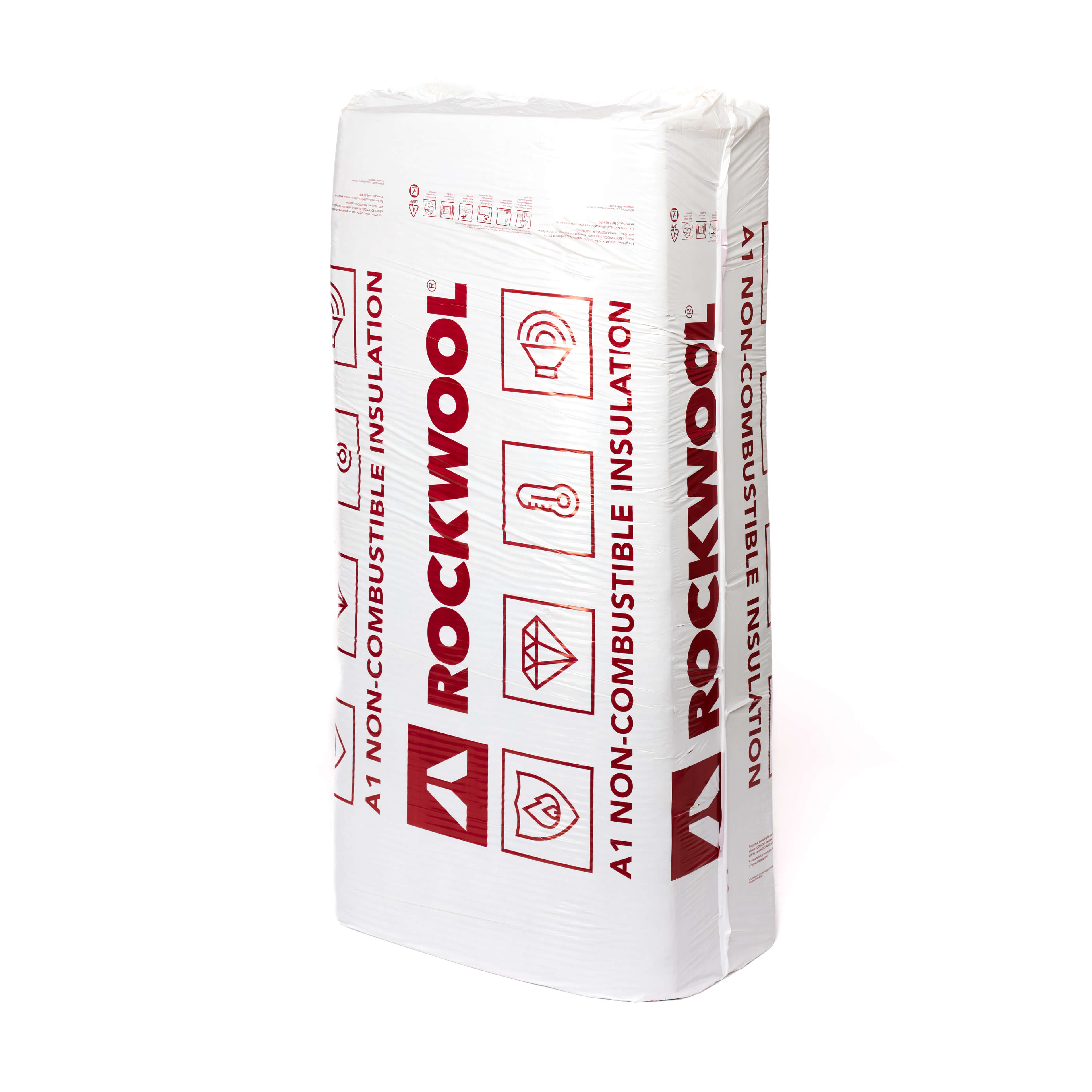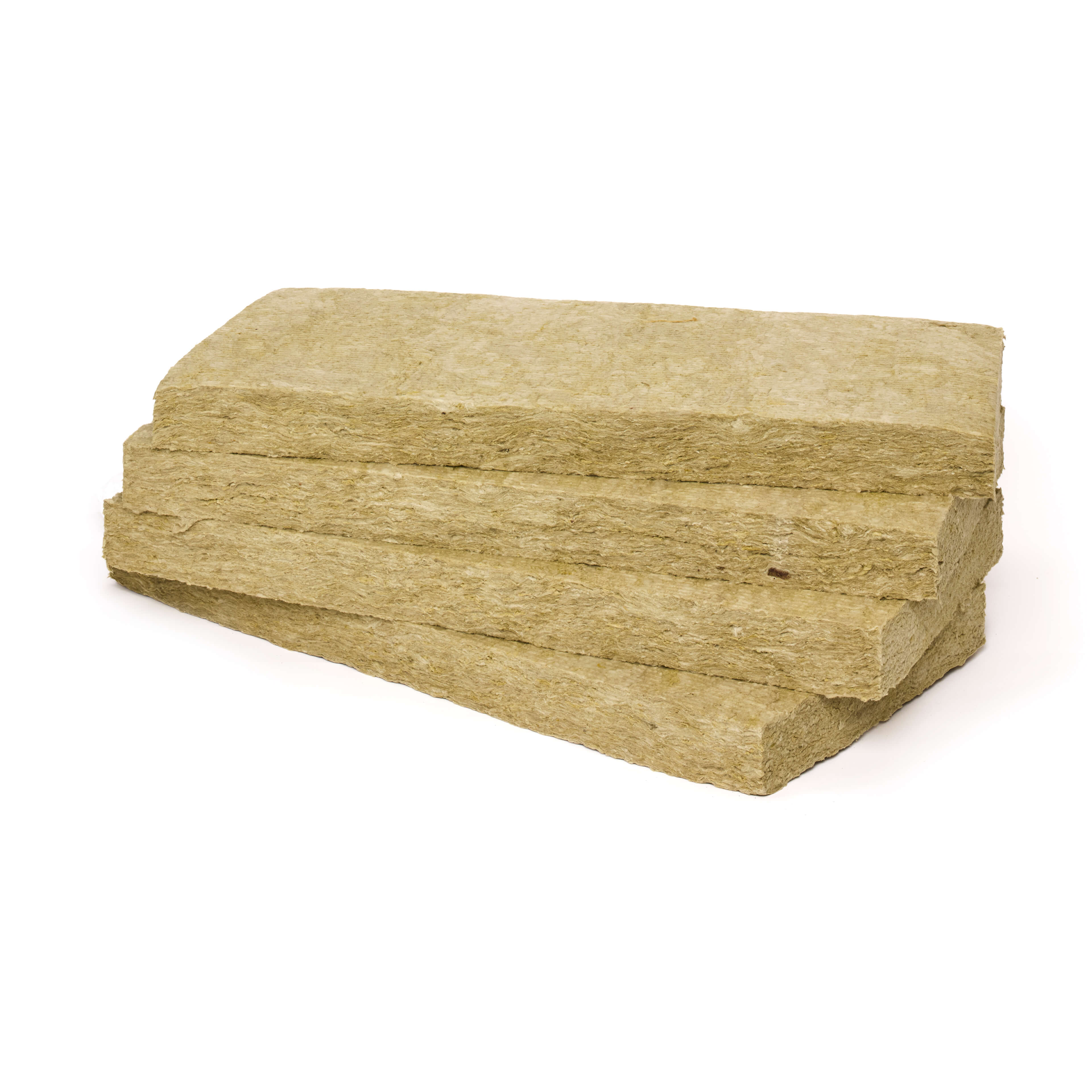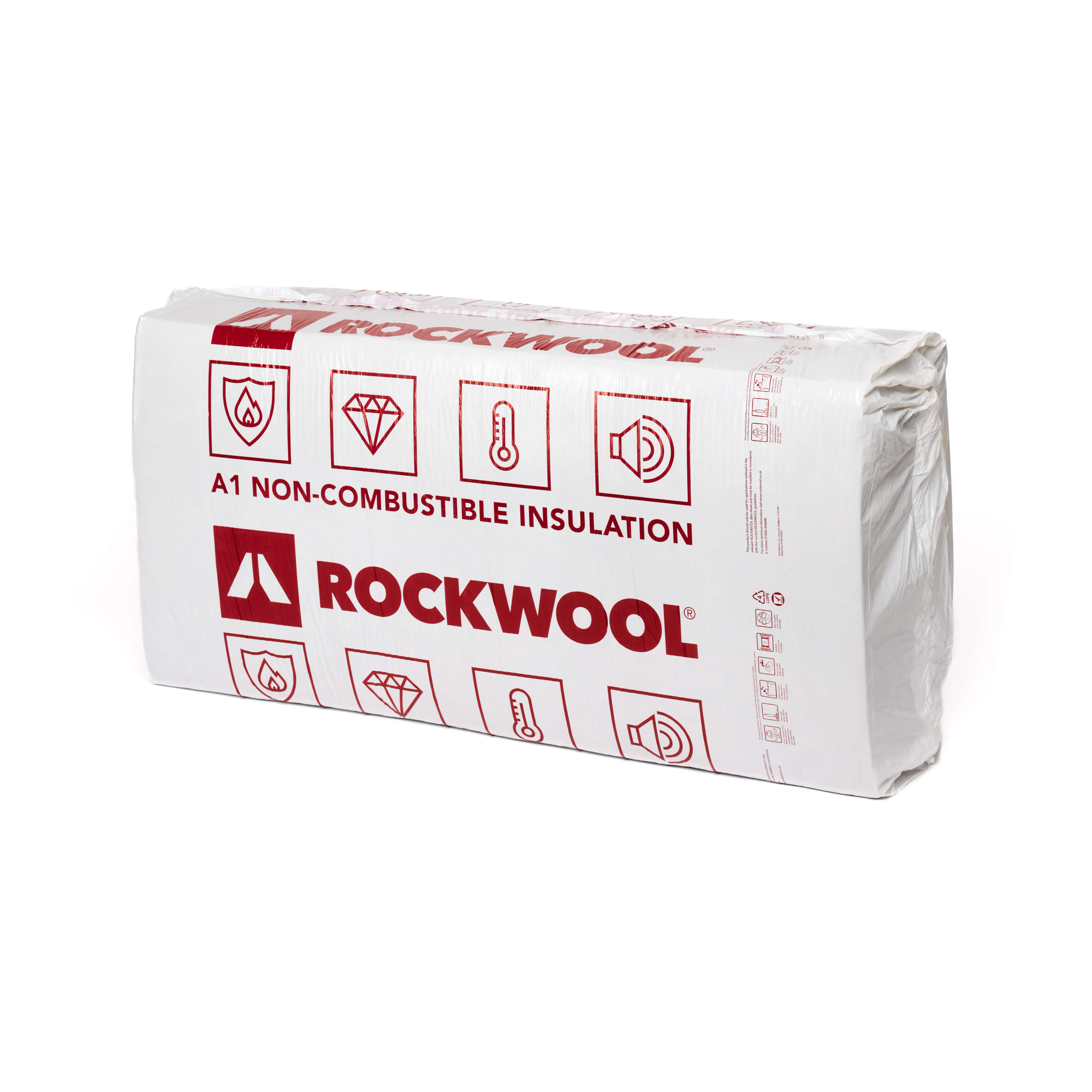Soundproof Insulation
(35 Products)Soundproof insulation helps control both airborne and impact noise by increasing mass and absorption within wall and floor cavities. When combined with decoupling methods and acoustic sealants, they contribute to full-system solutions that meet Part E requirements and enhance acoustic comfort in multi-unit buildings.
What Is Acoustic Soundproof Insulation?
Soundproof insulation, also referred to as acoustic insulation, relies on the principle of adding mass and multiple layers of dense materials.
When sound waves travel through the air, they create vibrations that pass from one material to another. Increasing the mass that sound waves need to traverse reduces the vibrations that reach the other side of the material.
Using dense insulation rolls or slabs can effectively dampen sound waves and disperse them, resulting in reduced noise transmission from other rooms or the outside.
Glass mineral and rock mineral are the two most popular choices for noise insulation that can reduce noise pollution in your home.
Soundproofing Techniques
Mass
A simple rule guides most acoustic design: greater weight equals stronger resistance to airborne noise. Adding dense layers - acoustic plasterboard or a laminated board/MLV composite - raises the barrier that sound waves must cross.
Damping
Porous or visco-elastic materials convert vibration into minuscule amounts of heat. Mineral-wool slabs (45 kg/m³) are widely specified because their irregular fibres disrupt the energy of mid- and high-frequency sound.
Structural Isolation
When two building elements are mechanically tied together, vibration travels straight through the joint. Introducing a break (double studs, resilient bars, acoustic hangers) interrupts that path and prevents energy from moving freely between wall faces or floor layers.
Airtight Construction
Sound exploits gaps as efficiently as air or moisture. A continuous bead of acoustic sealant around perimeters, back boxes, and service penetrations safeguards the performance achieved with mass and isolation.
Void Treatment
Unfilled cavities behave like resonant drums. Packing them with absorbent fibre reduces reverberation inside the void and therefore the overall sound pressure on the separating surface.
Recommended Soundproofing Products
High-Density Mineral Wool
Typically 45 kg/m³ or greater, mineral wool is ideal for absorbing airborne sound within stud walls, floor cavities, and ceiling voids.
Acoustic Plasterboard
Acoustic plasterboards are denser than standard drywall, which makes them more effective at limiting sound passing through walls or ceilings. They’re usually installed in layers to add mass, especially in situations where wall thickness is a constraint but performance still matters.
Resilient Channels & Acoustic Hangers
Instead of mounting plasterboard straight onto the frame, these systems create a slight gap between materials. That gap breaks the path of vibration, which makes a big difference in cutting down noise from things like footsteps or mechanical hum.
Mass Loaded Vinyl (MLV)
Despite being relatively thin, MLV is heavy, and that’s exactly what makes it effective. Because of its flexibility, it's easy to install in awkward areas like around ducts or between existing layers. It's commonly used in retrofit jobs where space is tight but performance can’t be compromised.
Acoustic Sealants, Tapes & Gaskets
A solid wall is only as quiet as its weakest seam. Minute openings, often invisible at first glance, give noise an easy route. Our acoustic sealants and tapes finish the job by closing every joint, covering every cable notch, and locking in complete airtight protection.
Understanding Acoustic Ratings
- STC / Rw: Sound Transmission Class (STC) / Weighted Sound Reduction Index (Rw) measures airborne-sound blocking. Higher ratings mean stronger isolation; in most homes and offices, a value north of Rw 50 is considered acceptable.
- IIC / L’nT,w: These numbers cover impact sound (the thumps and bumps from shoes or falling objects). Aim for a low L’nT,w or a high IIC if you want better control, especially in flats and spaces where people live and work above one another.
- NRC / Alpha (α): This value measures sound absorption. Surfaces with higher ratings reduce echo and reverberation.
How To Build An Acoustic System
- Identify the noise type. Airborne sound (voices, TV) and impact sound (footsteps, machinery) call for different strategies.
- Define targets first. Set STC / IIC goals before selecting products.
- Build a system. Mass, absorption, and sealing must work together.
- Block flanking routes. Treat floors, ceilings, and service runs.
- Seal every joint. Even pinholes degrade performance.
- Pack cavities tight. Gaps or loose batts cut results.
- Design to fit. Match wall build-up to available space.
Frequently Asked Soundproof Insulation Questions
What Is the Best Insulation for Soundproofing?
The type of insulation that you choose depends on your circumstances. There are lots of advantages of choosing either rock mineral or glass wool insulation. Here are a few things to consider when making your choice.
- Density - Rock mineral wool such as Rockwool acoustic insulation is far denser than glass wool, which means that it performs better as soundproofing insulation.
- Installation - Rockwool sound insulation slab is far more rigid than glass wool rolls. Rolls are better for difficult, uneven areas that would not suit rigid slabs.
- Fire - Both rock mineral and glass wool acoustic insulation materials are rated A1 (non-combustible) on the Euroclass scale. The Euroclass scale regulates the classification of insulation materials across Europe.
- Moisture - Rock mineral wool is resistant to water. You do not have to worry about sag or rot when you choose rock mineral slabs as acoustic insulation for partition walls, cavity walls and floors. Glass wool insulation is not as resistant to moisture. When moisture takes hold of glass wool rolls, they become a breeding ground for bacteria, fungi, and mildew. People who live in areas with high rainfalls often choose rock mineral wool slabs.
- Price - If you are searching for cheap acoustic soundproof insulation products, you should browse through our glass wool rolls. Glass wool insulation is up to 10% cheaper than the rock mineral wool alternative. However, being less dense than rock mineral wool, it doesn’t achieve the same levels of acoustic performance.
What Is The Best Sound Insulation for Walls?
For optimal soundproofing between rooms, mineral wool products are the preferred insulation for internal stud walls, especially in shared housing.
Mineral wool is cost-effective, simple to install, and provides excellent sound insulation capabilities.
How to Cut Acoustic Soundproof Insulation?
Whether you buy sound reduction insulation for walls or acoustic insulation for floors, you might need to cut your insulation down to size.
Pipes, cables, and joists can get in the way of a perfect finish. Even if you have bought noise insulation that perfectly fits between your studs, it is worth knowing how to resize it.
Lots of people think that they need specialist equipment to cut insulation. You can cut rock and glass wool insulation with a simple serrated knife. Utility knives are another popular choice, but they do dull quickly.
We recommend marking your measurements and using a guide (such as a straight piece of wood) to keep your cuts accurate
Always wear safety gloves, aprons, and goggles. If you are concerned about health and safety, consult with a professional before making any cuts.
How Does Acoustic Insulation Work?
Unlike standard insulation, acoustic products are engineered with dense, fibrous materials that absorb sound waves rather than letting them pass through. This makes them far more effective at reducing noise between rooms and floors.
In uninsulated spaces, sound travels freely - bouncing through walls, ceilings, and floors with little resistance. But when you add layers of sound-absorbing insulation, vibrations are disrupted and reduced at every stage.
Whether you're using acoustic rolls, slabs, or boards, these materials act as a protective barrier, minimising sound transmission and creating a quieter, more comfortable environment.
We offer a full range of acoustic insulation solutions designed to tackle airborne noise and improve acoustic performance throughout your home.















